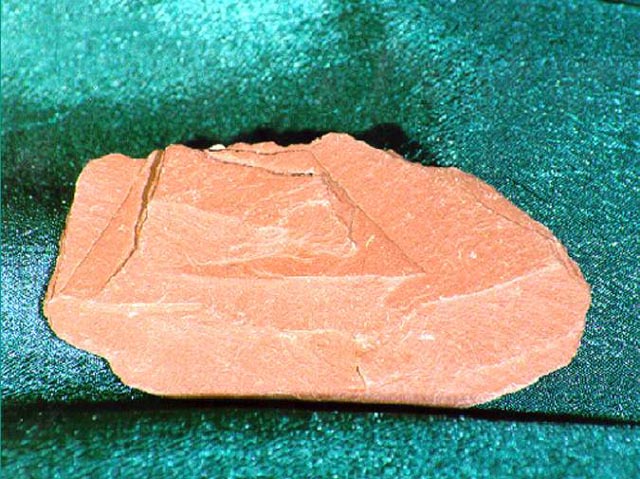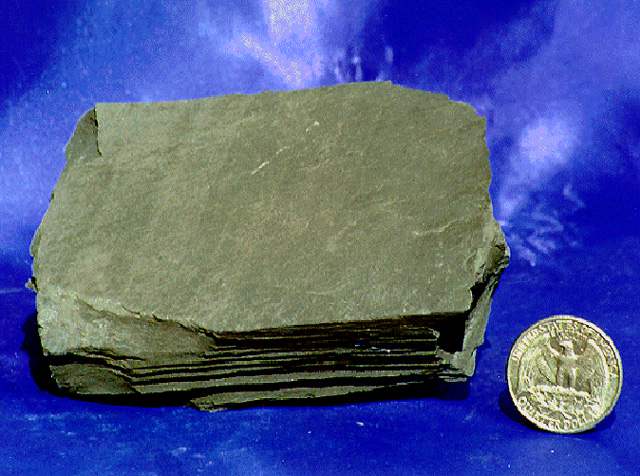
Classification of Metamorphic Rocks (Part 1)
Metamorphic rocks are classified based on their texture and composition. Metamorphic textures can be foliated or non-foliated.
3. Composition
Foliated Textures
• A foliated texture is caused by pressure. Mineral grains from pre-existing rocks are oriented parallel to each other or organized into distinctive bands during metamorphosis. Examples of foliated textures include slaty, phyllitic, schistose, and gneissic.
• Rocks with a slaty texture are fine-grained. They have dull surfaces and split apart easily.
 Red slate (Photograph by Parvinder Sethi)
Red slate (Photograph by Parvinder Sethi)
Rocks with slaty texture, like this red slate, split apart easily. Grains in slaty rocks are too small to see with the naked eye.
• Phyllitic rocks have very small grains and shiny, crenulated (crinkled) surfaces. They also split apart easily.
 Phyllite (Photograph by Parvinder Sethi)
Phyllite (Photograph by Parvinder Sethi)
Rocks with phyllitic texture, like this green phyllite, are slightly more metamorphosed than those with slaty texture. This sample has weak crenulation bands on its surface.